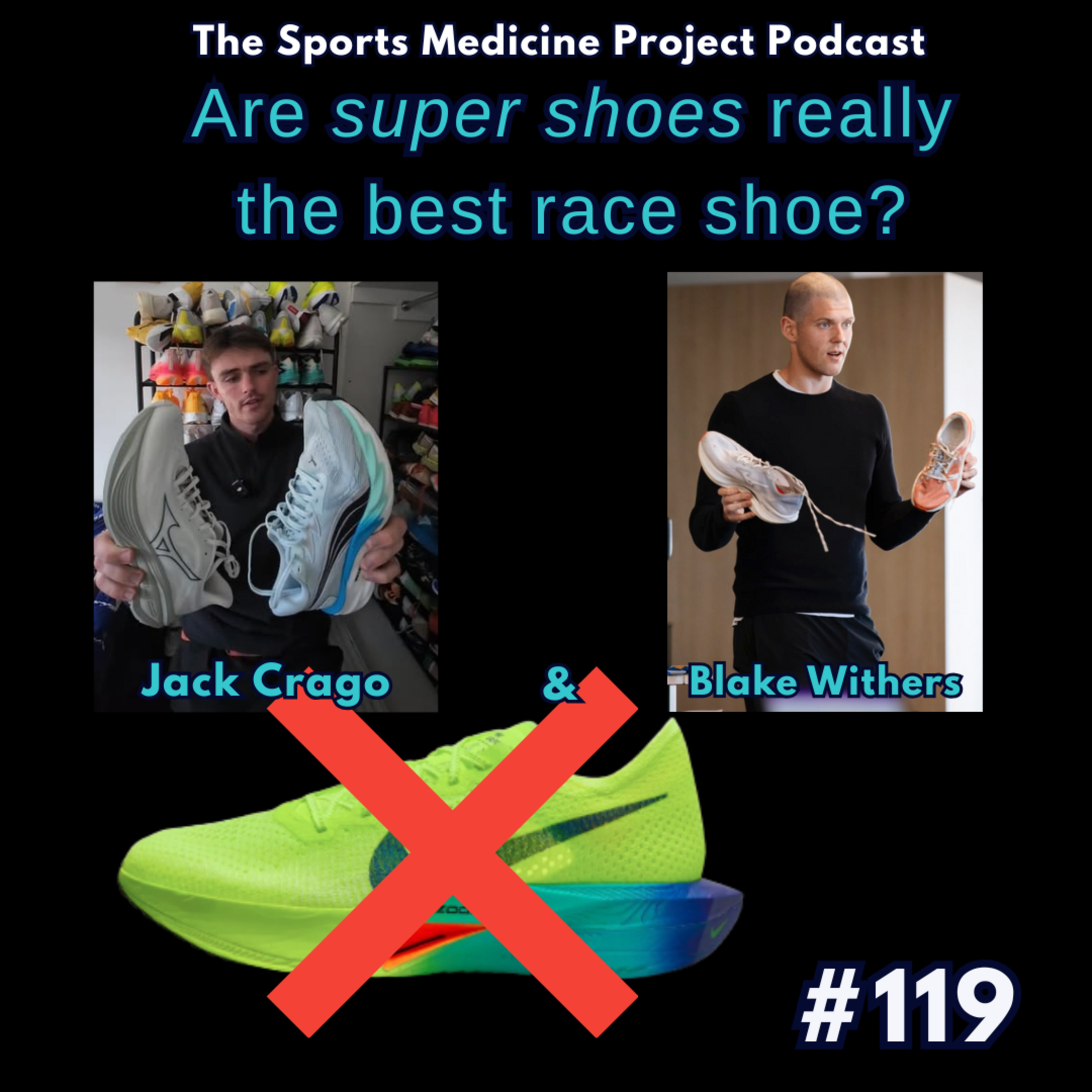View Transcript
Episode Description
Blake Withers and Jack Craigo discuss the nuances of running shoes, particularly focusing on super shoes and their suitability for different runners. They explore the importance of shoe fit, the role of retail in guiding shoe selection, and the potential injury risks associated with performance footwear. The discussion also highlights the significance of comfort and the impact of shoe technology on running performance, concluding with recommendations for runners on choosing the right shoes for their needs.
Jack Crago youtube and instagram: @jog.on.crago
super shoes, running shoes, injury prevention, shoe fit, marathon training, footwear technology, running performance, retail experience, shoe selection, running community
Super shoes, also known as advanced footwear technology (AFT), are designed to enhance running performance by incorporating features like aggressive rocker geometry, high stack heights (often ≥35–50 mm), lightweight and compliant foams, carbon or composite plates, and minimal weight. These features aim to improve running economy and propulsion. However, their widespread use has prompted questions about whether they are the best option for all runners—especially when it comes to injury risk and biomechanical stability.
Running participation continues to grow, with events like marathons selling out rapidly (Barrons et al., 2023). Many runners get their footwear advice from online sources or retail staff. Research suggests that both runners and retailers prioritise comfort, with super shoes often perceived as more comfortable than generic alternatives (Malisoux et al., 2020). While footwear is known to influence both performance and injury risk (Nigg et al., 2023), the assumption that super shoes are universally superior oversimplifies a complex trade-off.
One of the major proposed performance benefits of high stack height is an increase in effective leg length, which may lengthen stride and improve running economy (Burns & Tam, 2020). However, these gains may come at the cost of reduced frontal plane ankle stability, particularly at higher speeds (Hoogkamer, 2020; Barrons et al., 2023). This potential drawback becomes even more important in longer races when fatigue sets in and motor control becomes more challenged.
Recent studies have begun to test these assumptions more rigorously. Garofolini et al. (2024) and Möhler et al. (2022) hypothesised that high-stack shoes increase instability in the control of the centre of mass (CoM), and that these effects are exacerbated at higher speeds due to the added demands on motor coordination. Their findings suggest that super shoes may impose additional coordination demands that not all runners can accommodate.
In one of the most comprehensive studies to date, Kettner et al. (2025) tested runners using shoes with low (27 mm), medium (35 mm), and high (50 mm) stack heights. The high stack shoes caused measurable changes in running style: increased vertical oscillation of the centre of mass (COMosc), lower step frequency, and higher duty factor (i.e., more time spent on the ground). These shoes also altered ankle mechanics, especially increasing time in eversion and eversion angles. Critically, they found lower local dynamic stability at the hip—measured using Maximum Lyapunov Exponent (MLE)—with the high stack shoes, suggesting impaired control of the centre of mass. These changes were largely independent of running speed, appearing consistently at both 10 and 15 km/h.
From a clinical perspective, this evidence indicates that super shoes are not one-size-fits-all. Runners with a history of injury, reduced neuromuscular coordination, or poor fatigue resistance may be better served by lower stack, more stable footwear. Coordination and stability may be just as critical as cushioning and propulsion—especially in long races or for less experienced runners.
